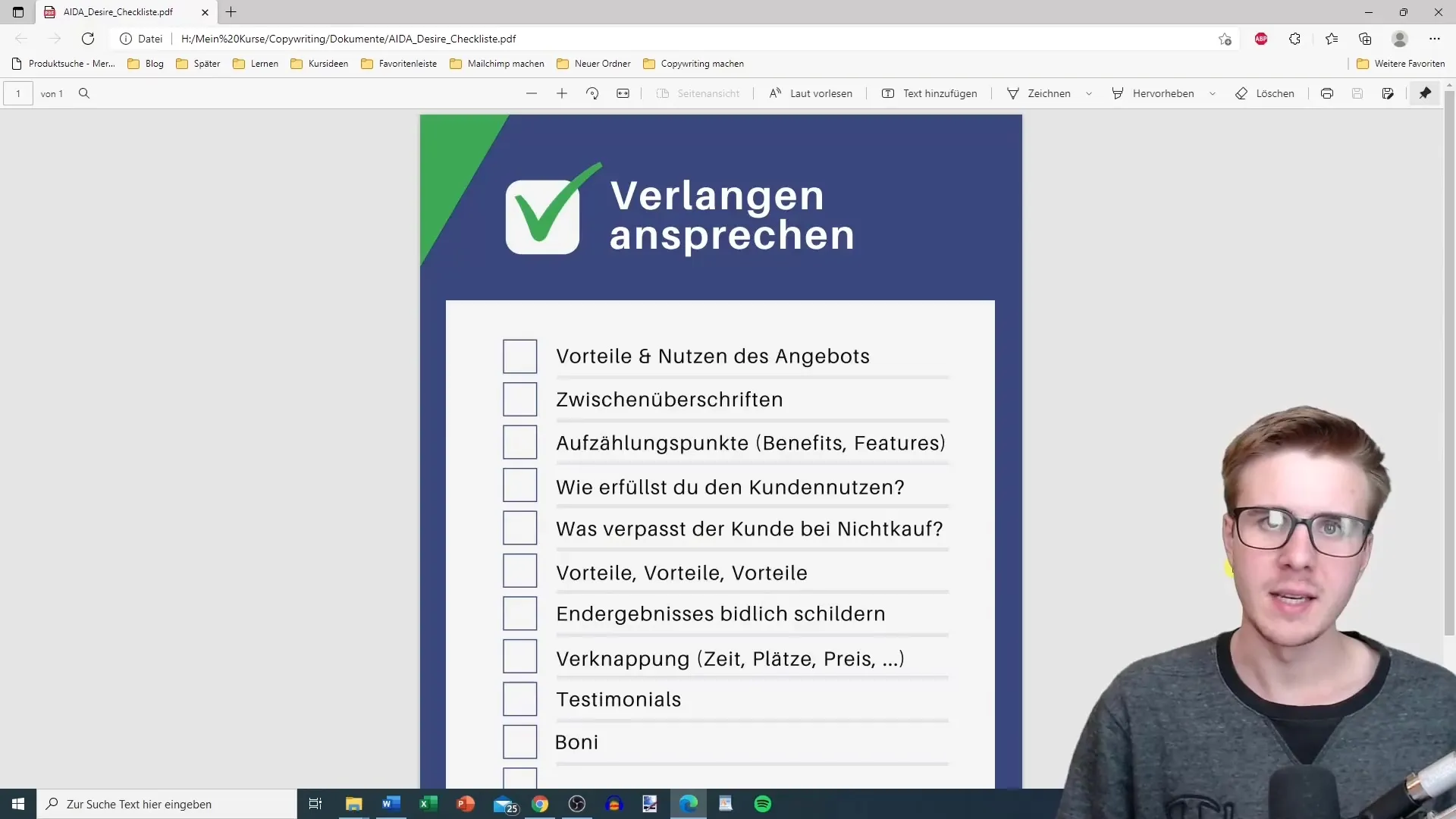The ability to deliberately awaken the desire of your target audience is one of the key disciplines in Copywriting. In this section of the AIDA model (Attention, Interest, Desire, Action), we focus on the crucial step that will help you motivate your readers to purchase your product or service. It's not just about providing information but about establishing an emotional connection and convincing the reader that they urgently need the offer.
Key Insights
- Desire is created by connecting benefits and customer value.
- Subheadings and structured texts maintain reader attention.
- Scarcity and imagery enhance purchase motivation.
- Testimonials increase trust in your product.
- Bonuses and additional offers boost the perceived value of the purchase.
Main Part: Step-by-Step Guide
1. Emphasize the Benefits and Customer Value
In the main part of your message, it is important to clearly highlight the benefits of your product. You should aim to show how your offer can specifically help the customer solve their problems. For example, if you offer a product to reduce advertising costs, explain clearly how the reader can reduce their costs while maintaining the number of website visitors.

2. Use Subheadings
To ensure that your text remains well-structured and clear, the use of subheadings is essential. A long continuous text without paragraphs can greatly diminish the reader's motivation. Use subheadings at appropriate points to structure different aspects of your offer and increase readability.
3. Differentiate Features and Benefits
When describing a product, it is important to distinguish between features and benefits. Each feature (e.g. a waterproof smartphone) should be clearly linked to a specific benefit (e.g. ideal for divers and snorkelers). This allows the reader to directly see what benefit they can derive from the product.
4. Clearly Highlight the Benefits
It's not enough to just present benefits; you must also show concretely how these benefits work in practice. If you aim to reduce advertising costs, you should communicate beneficial aspects clearly and demonstrate how this advantage becomes tangible for the customer.
5. Use the FOMO Tactic (Fear of Missing Out)
Make sure to remind the reader of what they're missing out on if they don't buy your product. Emphasize that it's a unique opportunity from which they can benefit, and guide their thoughts on what happens if they decide against a purchase. This can often trigger stronger purchase motivation.
6. Utilize Visual Imagery
Use visual representations in your texts to illustrate the end benefit. By creating visual scenarios that show the reader what life looks like after the purchase (e.g. relaxing on the beach), you can further enhance the desire.
7. Implement Scarcity
Another proven strategy is temporal and space-related scarcity. If there is only a limited time to avail your offer or only a specific number of slots available, the pressure on the reader to make a purchasing decision quickly will increase. This can be achieved through time-limited promotions or special discounts.
8. Include Testimonials
To convince others of your product, include testimonials from satisfied customers or case studies. These often have more convincing power than the best sales arguments you can formulate yourself. Customer reviews or screenshots of positive feedback add credibility and help potential buyers develop trust in your brand.
9. Offer Additional Bonuses
Oftentimes, you can boost desire further by offering a bonus in addition to your product. For example, you can offer buyers an extra free guide that helps them get more out of your product. This makes them feel like they are getting an especially good deal.
Summary
Cultivating desire in copywriting is an art that is crucial to the success of your sales strategy. By applying the steps outlined, you will not only capture the attention of your target audience but also motivate them to actively move towards a purchase. Remember to clearly communicate the benefits, structure your text well, use scarcity, and share personal experiences.
Frequently Asked Questions
What is the AIDA model?The AIDA model is a marketing and sales concept that leads to the four phases Attention, Interest, Desire, and Action.
How can I stimulate my customers' desire?By clearly highlighting the benefits of your product, linking the benefits to the features, and appealing to emotions.
How important are testimonials in creating desire?Testimonials create credibility and trust, which is crucial to increase your customers' desire.
Should I always offer bonuses?Bonuses can be effective, but it is important to choose very selectively to not diminish the value of the main offer.
How can I apply scarcity?Set time limits or show stock availability to prompt customers to make a quick purchase.


